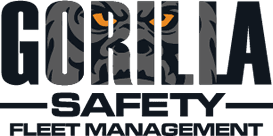
One of the easiest ways to reduce unnecessary expenses and keep your drivers from being sidelined on the road is to make sure your fleets operate safely. Safe fleets reduce fuel costs, have less accidents, and face fewer fines from roadside inspections. Follow these safety tips to boost your bottom line and keep your drivers and fleet safe.
Use Technology to Your Advantage
The electronic logging device (ELD) in each vehicle can tell you important information about how a driver handles their vehicle.
- Hard braking and acceleration
- Speeding
- Idle time
All of these things contribute to accidents on the road, added fuel costs, and safety risks. Use the technology you have to monitor driver behavior. When you see a driver exhibiting dangerous driving behavior, address it with them.
Train Your Drivers
All new hires should go through certain basic training before you put them out on the road. This can include basic safety training, understand the rules of the road, and situational simulations to give them an idea of what to do when the inevitable happens. But existing drivers need ongoing training, as well. Consider training on accident prevention, best practices on the road, and even defensive driving courses. Even seasoned drivers can use a reminder from time to time to keep their skills fresh.
Make Vehicle Maintenance Easier for Everyone
Your drivers are only as safe as the trucks they’re operating. Make it easier for mechanics and drivers to communicate and get trucks in for necessary maintenance and repairs. Don’t let repair requests get lost in the shuffle or hidden in a pile of paperwork on your desk. Fleet management systems, like Gorilla Safety, let you streamline repair requests so that drivers, mechanics, and you always know when a vehicle needs to be serviced, when it needs to come off the road for repairs, and more.
Keep the Lines of Communication Open
When it comes to safety, you drivers shouldn’t just hear from you during an annual training class. Consider a weekly or monthly report to let drivers know how they’re doing and how the entire fleet stacks up in terms of safety. Email safety tips and reminders. Schedule regular calls or in-person meetings. By making it clear you place a priority on safety, your drivers will, too.
Offer Incentive Programs for Safety
It’s not enough to tell people what they shouldn’t do (although that’s important). You also want to reward safe drivers and create incentives for improvement. You can offer bonuses or extra pay for hitting safety goals. You may want to provide perks like extra paid time off, upgraded equipment, or travel gear for your drivers who stay safe. When drivers know that they can directly benefit from being safer out on the roads, they are more likely to stay in compliance.
Enforce Your Own Policies
Make sure you have a policy to deal with drivers who don’t comply with your fleet’s policies and procedures. When dealing with unsafe driving behavior or anything else that violates your policies, make sure you stick to your own rules. This may be a conversation at the first violation, training at the second, and disciplinary measures beyond that. Whatever it is, don’t ignore unsafe behavior. If you do, it’ll cost a lot more in the long run when it catches up to your driver and your fleet.
Monitor your drivers on the road, make communication easier, and even report accidents more efficiently with the right fleet management system. Gorilla Safety offers all that and more so your fleet can be safe and successful. Contact us today.

